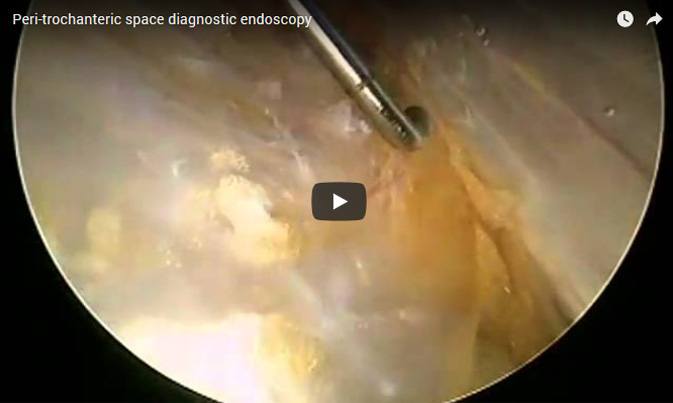A bursa is a closed fluid-filled sac that functions to reduce friction between tissues of the body. Bursae are located near major joints such as shoulders, elbows, hips and knees. When a bursa becomes inflamed it is called bursitis. Two major types of bursitis exist in the hip: trochanteric bursitis and iliopsoas bursitis. Trochanteric bursitis causes pain on the outer and lateral portion of the hip, and may be confirmed by pain-numbing injection given by a physician. Iliopsoas bursitis typically causes pain in the front of the hip around the groin. Treatment of bursitis may include anti-inflammatories, physical therapy and stretching, or cortisone or platelet rich plasma (PRP) injections. If bursitis does not resolve with these measures, arthroscopic surgery may be used to debride the inflamed, painful bursa.
Trochanteric bursitis may be the early sign of a gluteus medius tear. Gluteus medius tears are often associated with weakness. If the bursitis persists despite conservative measures, an MRI may be warranted to assess for a gluteus medius tear.


